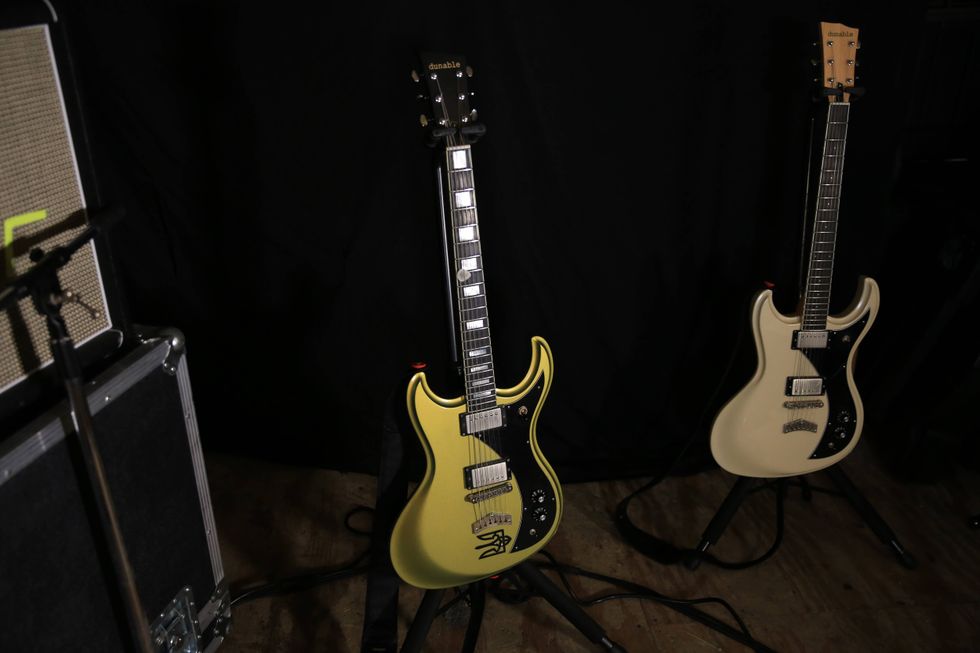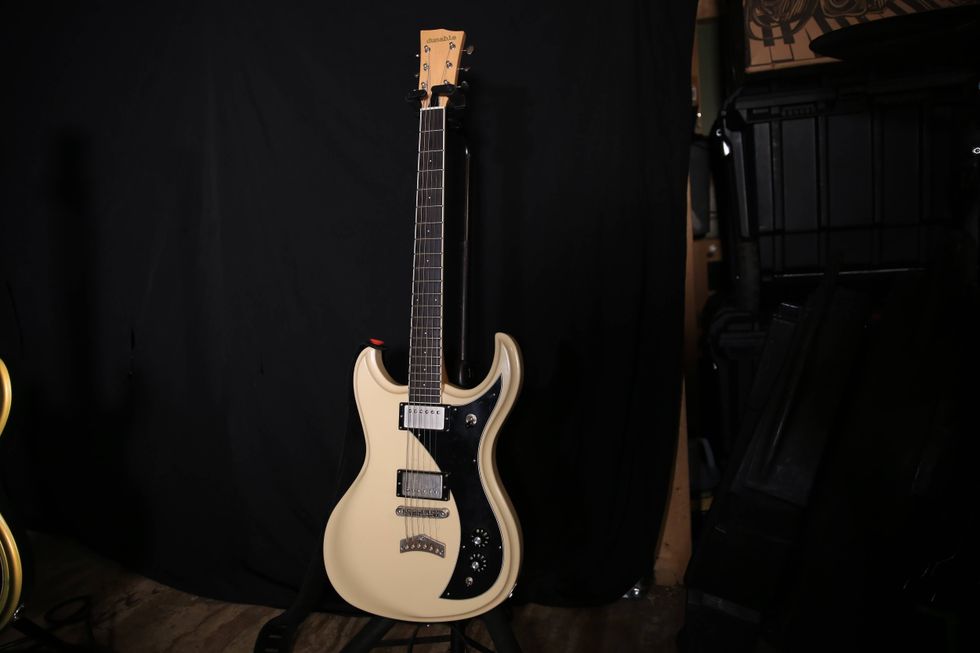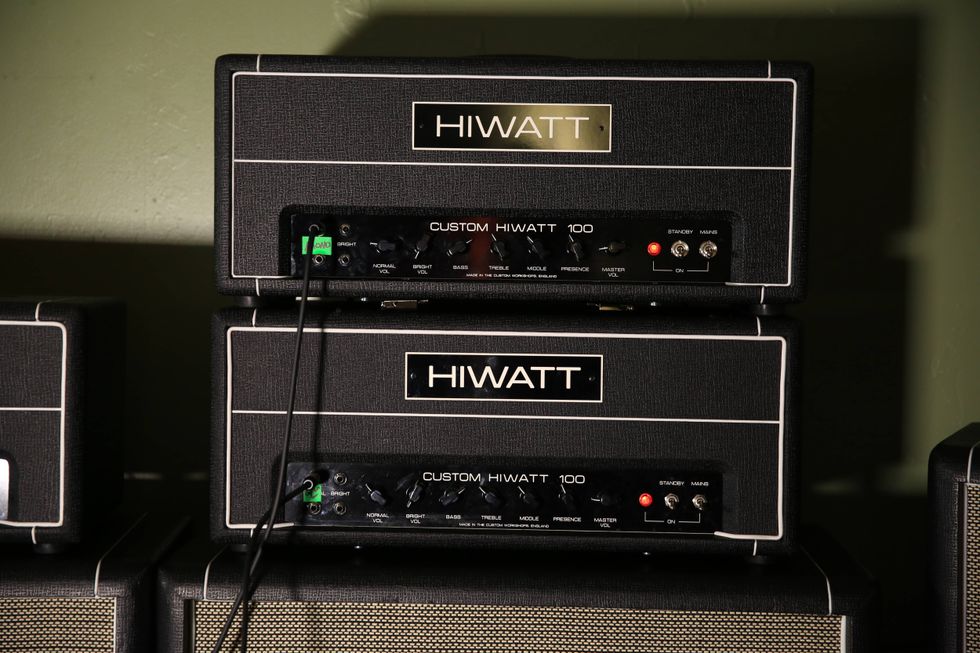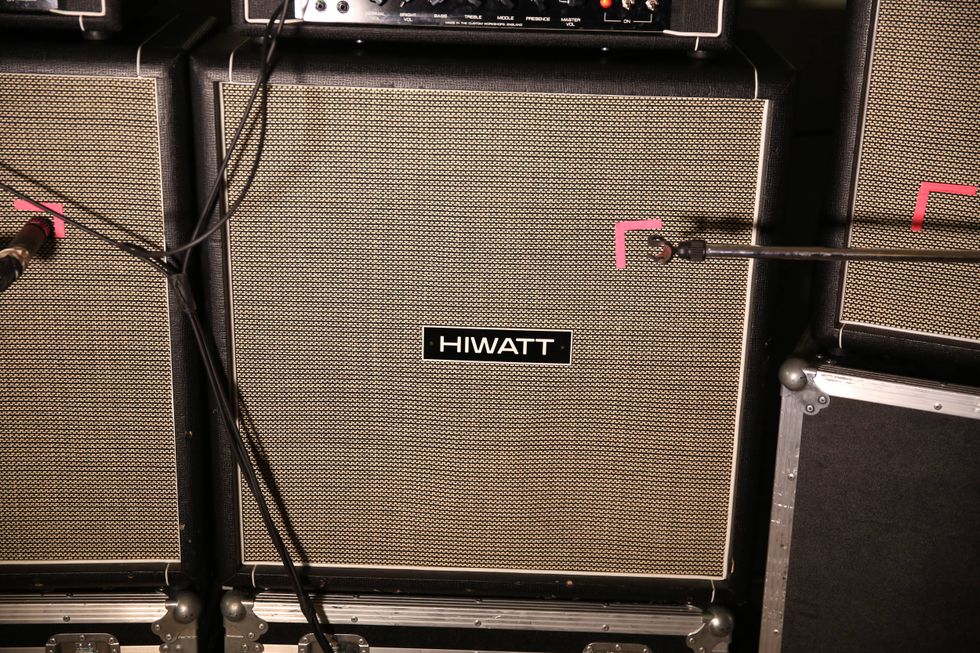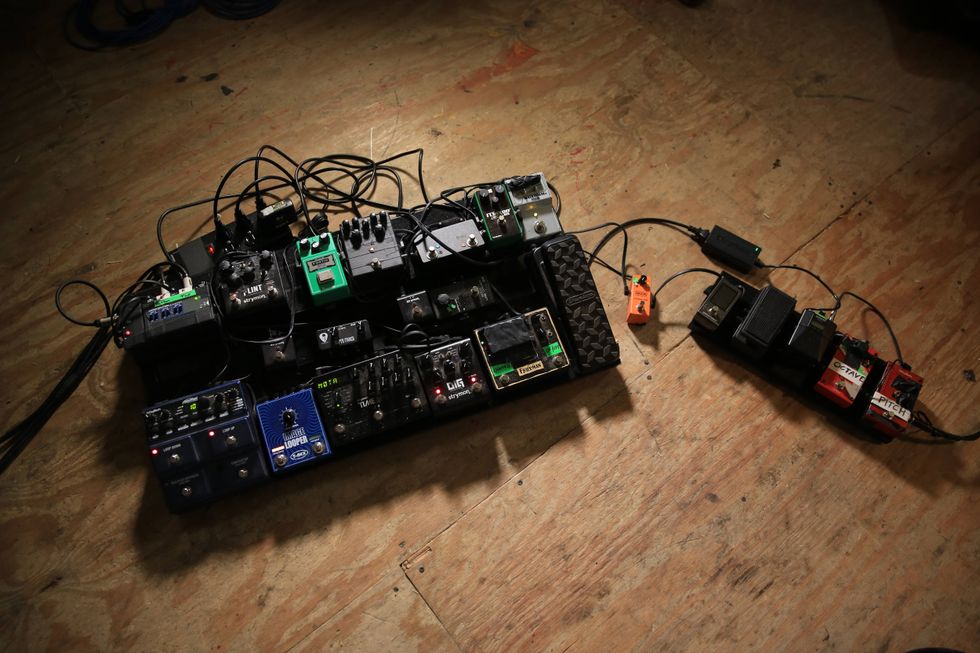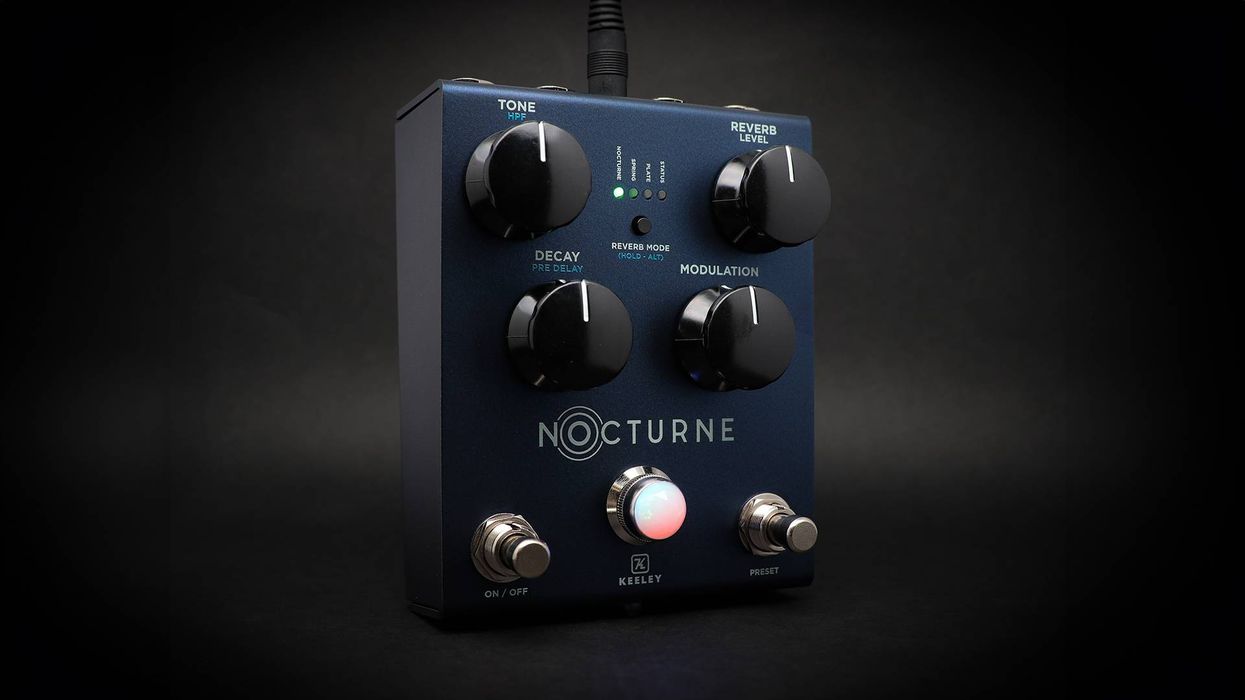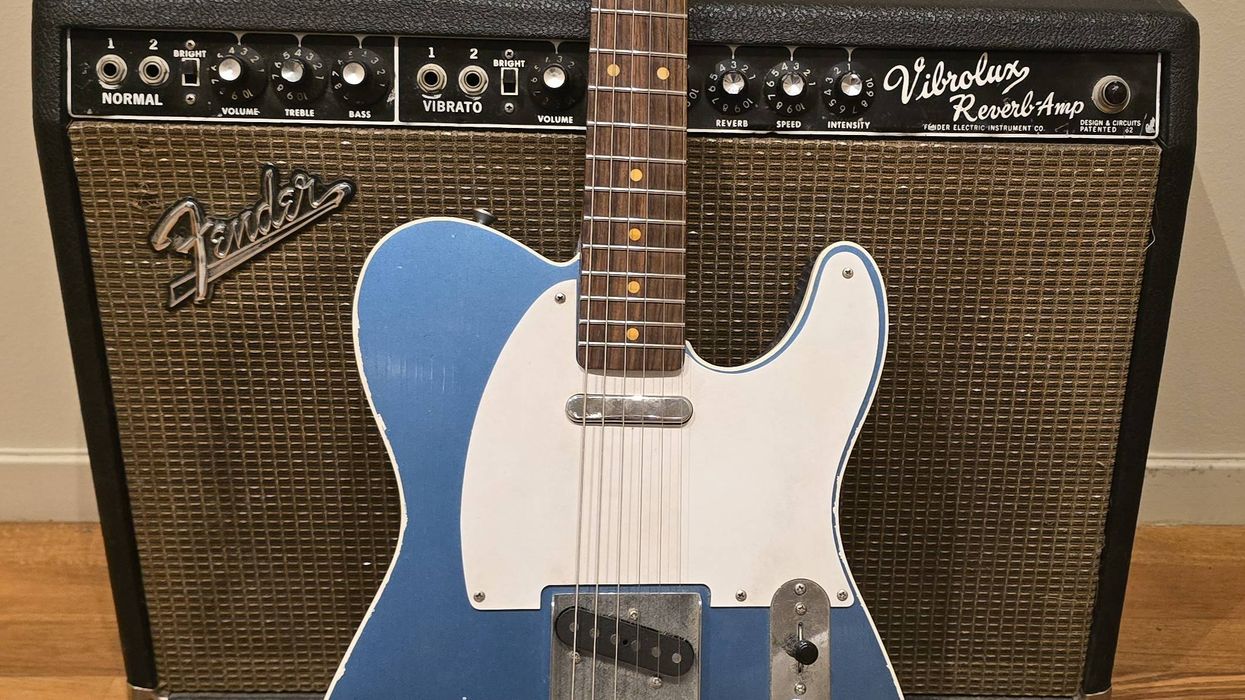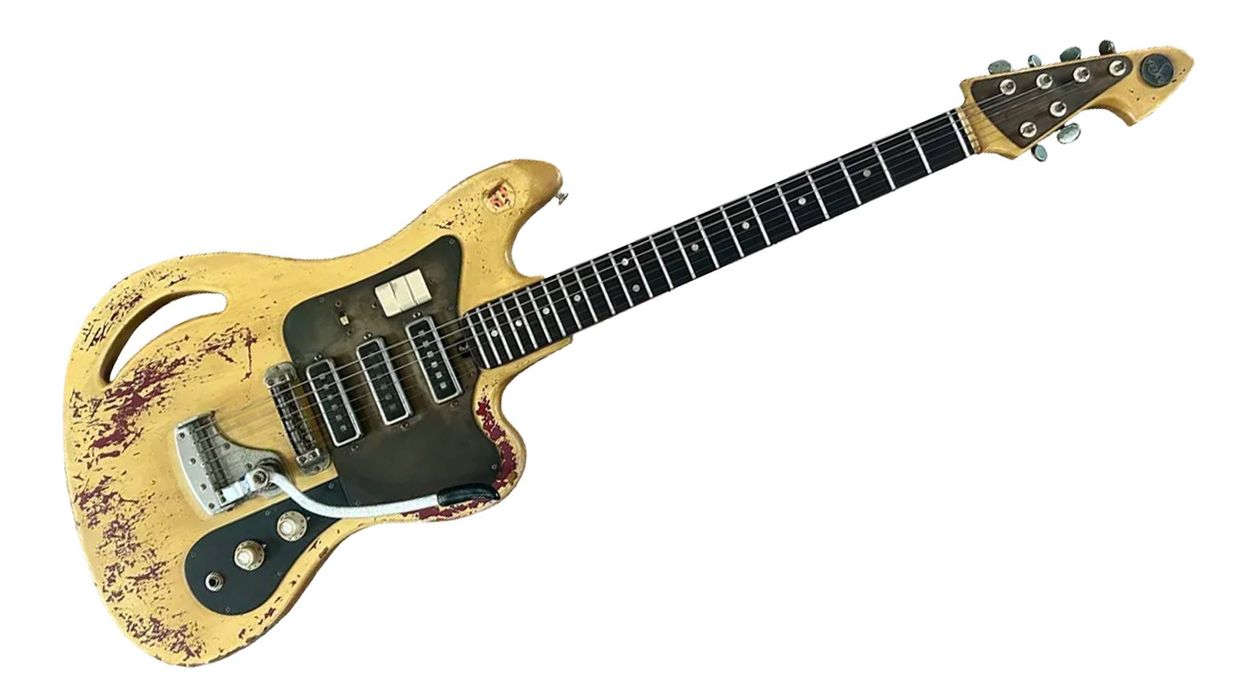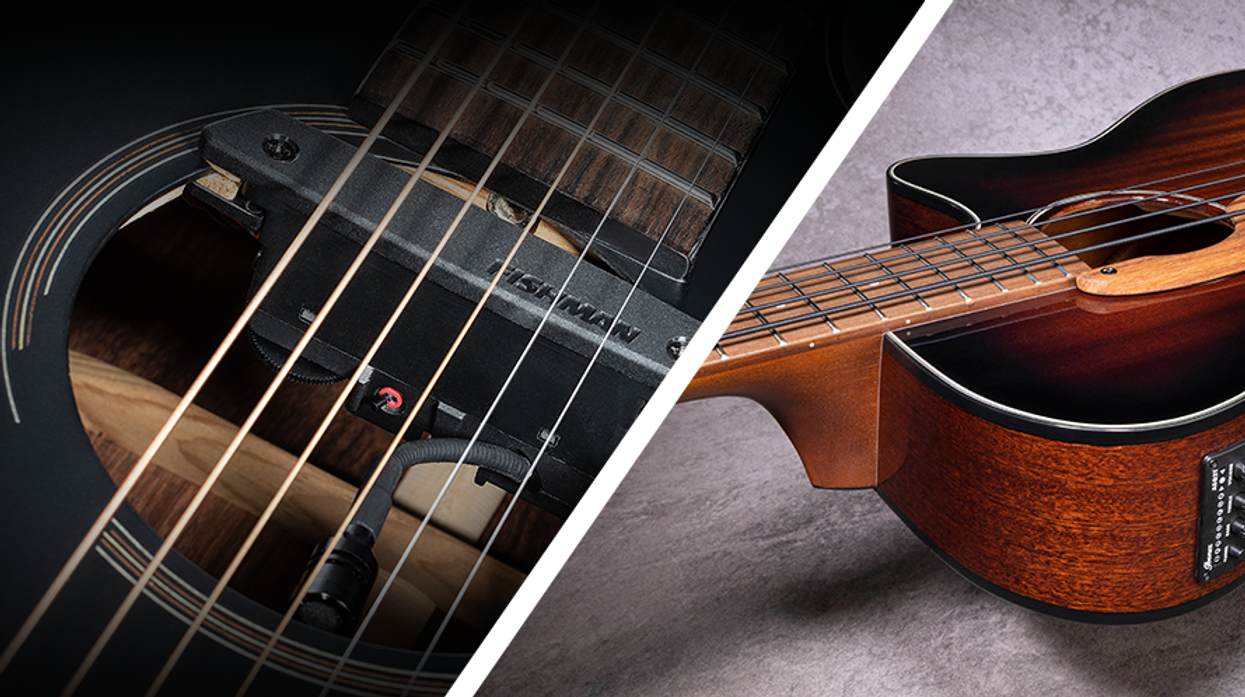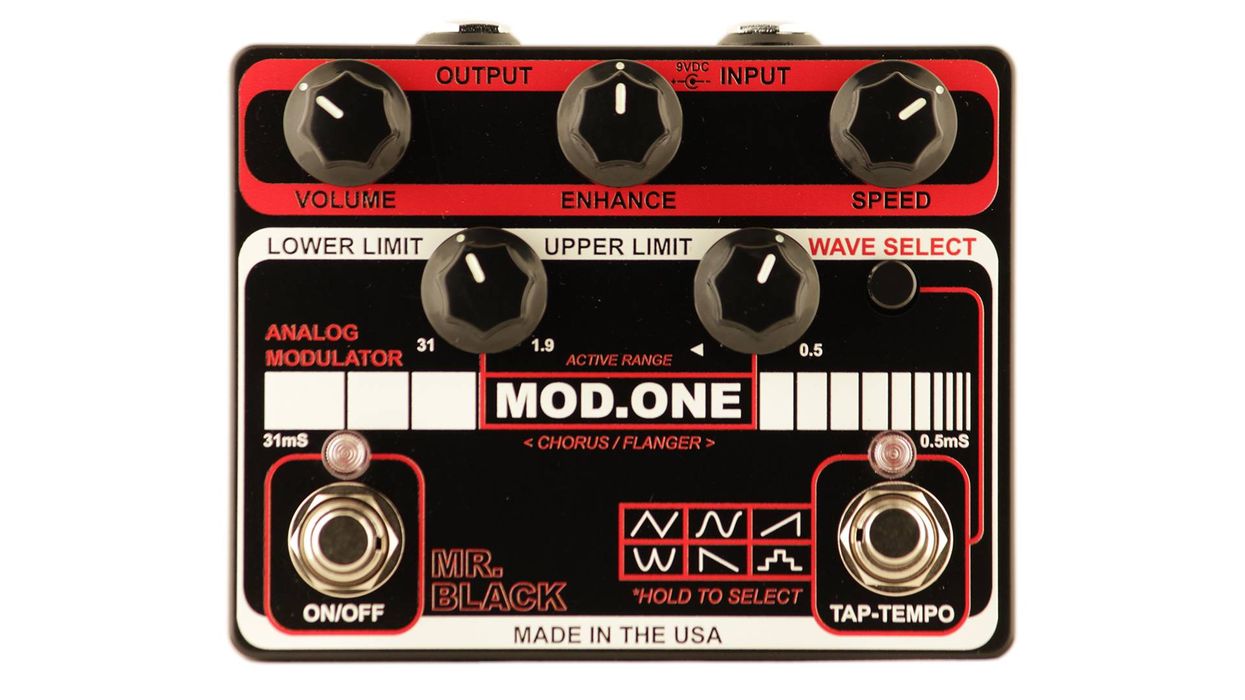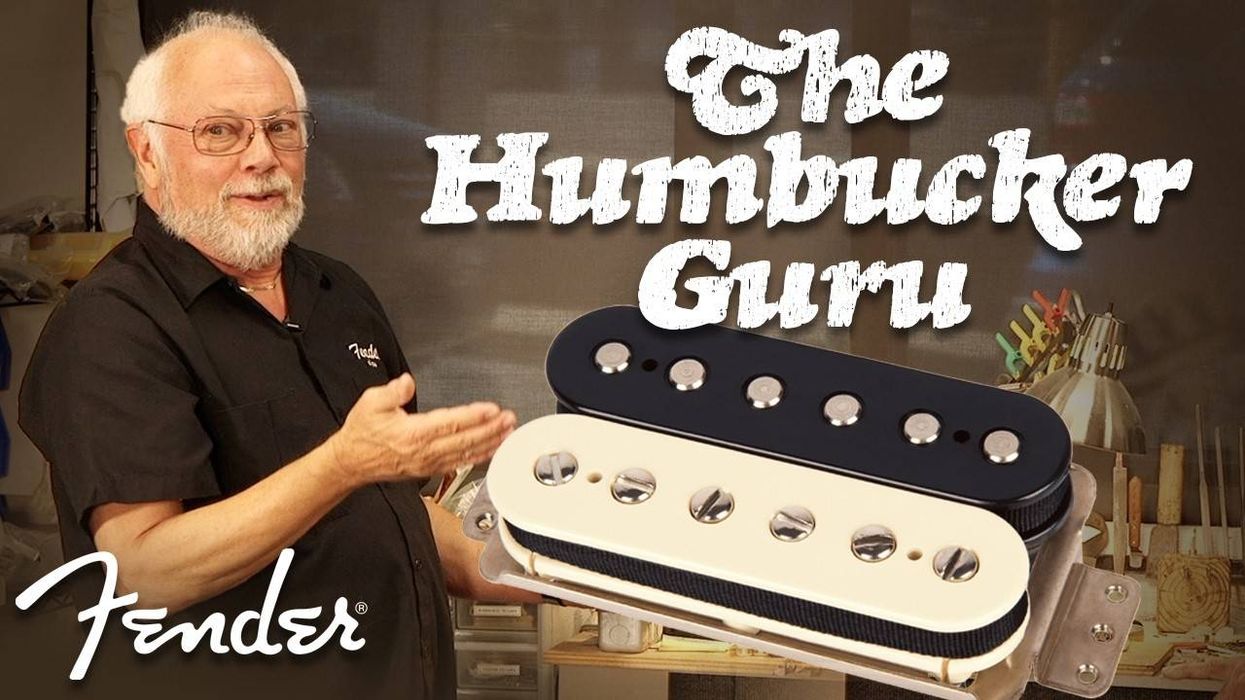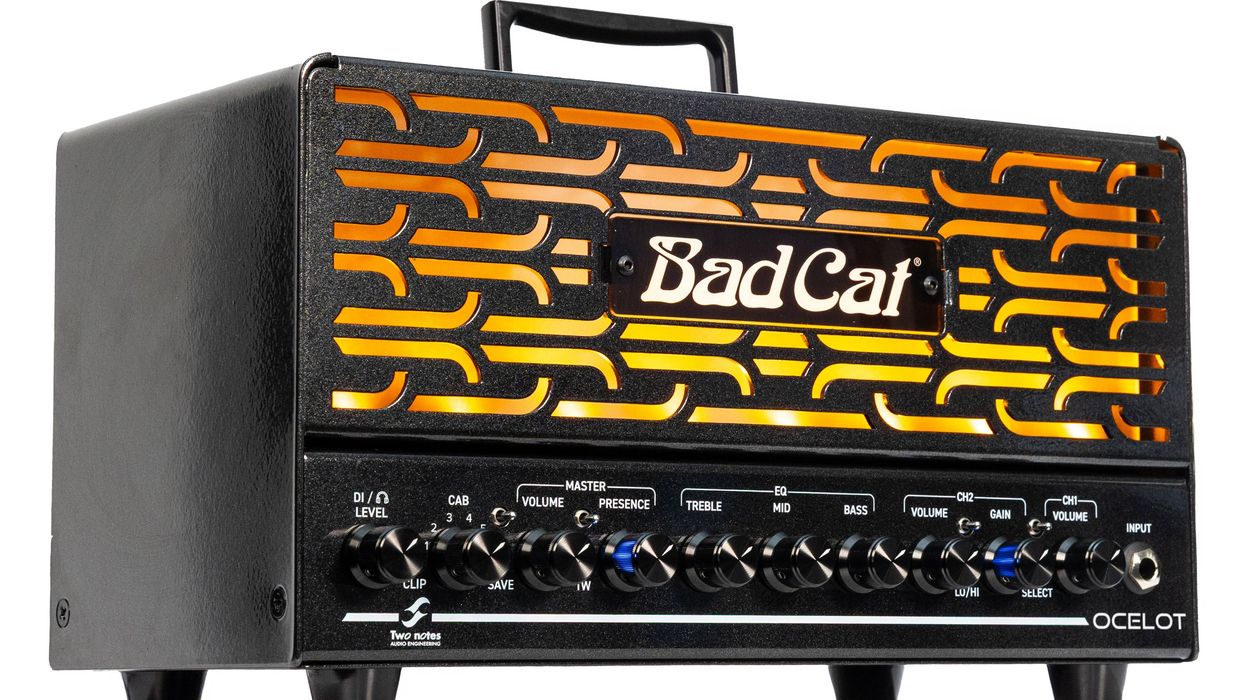Have you ever purchased a guitar and thought that the finish might have been altered, but you just never knew for sure? You’re not alone. There are a whole slew of vintage necks and bodies floating around that have had repairs with finish touchups, misleading many in the belief they’re untouched and 100 percent original.
To the naked eye, it can be extremely hard to detect, but by using a black light—a tool used mostly in the violin world—you can uncover the hidden secrets about what a finish may have endured over time.
Here are just a few of the possible reasons I’ve come across for why a finish becomes a candidate for overspray or drop-filling with lacquer: trying to hide the classic brokenheadstock repair; rivet or metal wear from using an old capo; neck wear from many hours of practicing and gigging; patching up miscellaneous body chips and dents; melting in old and new lacquer when removing pick marks; and freshening up the overall look of the instrument with overspray.
On the Bench
At first glance, the face of the headstock appeared to have the misty look of overspray to it. The spaghetti logo decal, in silver with a thin black outline, had some damage as well—a third of it was missing. The date penciled in at the heel of the neck showed the guitar was made in November of 1959. The frets have been replaced to a high standard of excellence. The sides and corners of the heel have some non-factory Fender color fused to them from the body neck rout. The neck was removed from a Tele-kit body, poorly made to look like an original ’59 body.
Overall, this is a wonderful neck. The question is, why is there a very light, misty overspray on the face of the headstock? Using a shop lamp, I couldn’t see any other alterations to the finish with the naked eye. We shall see with the black light.
Black Lighting 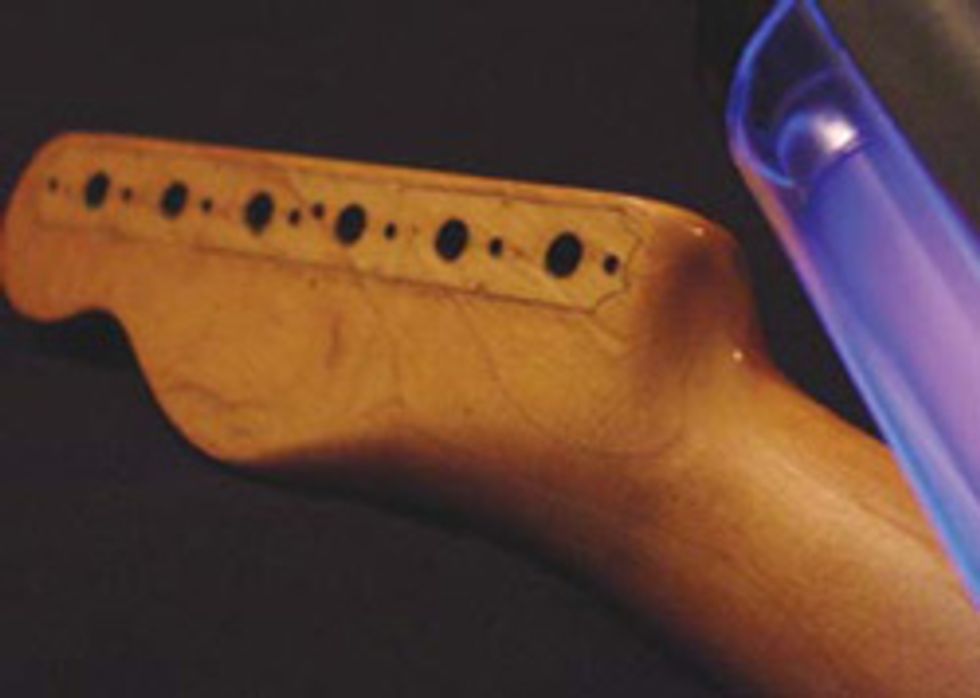
We were ready to light up the neck with a neon glow. It’s not extremely difficult to take readings, but it does take an eye—much like a doctor reading an x-ray. I slowly moved the black light inch by inch across the neck. There it was—the neon glow brought out a disturbance in the natural flow of the finish. The treble backside of the neck had a milky, blotchy appearance, much like when you see a clear layer of finish separating because of an adhesion problem. It seems to me that after years of playing on the neck, the treble backside of the neck naturally had some finish wear. Perhaps someone thought it would be a good idea to tidy things up.
Remedy 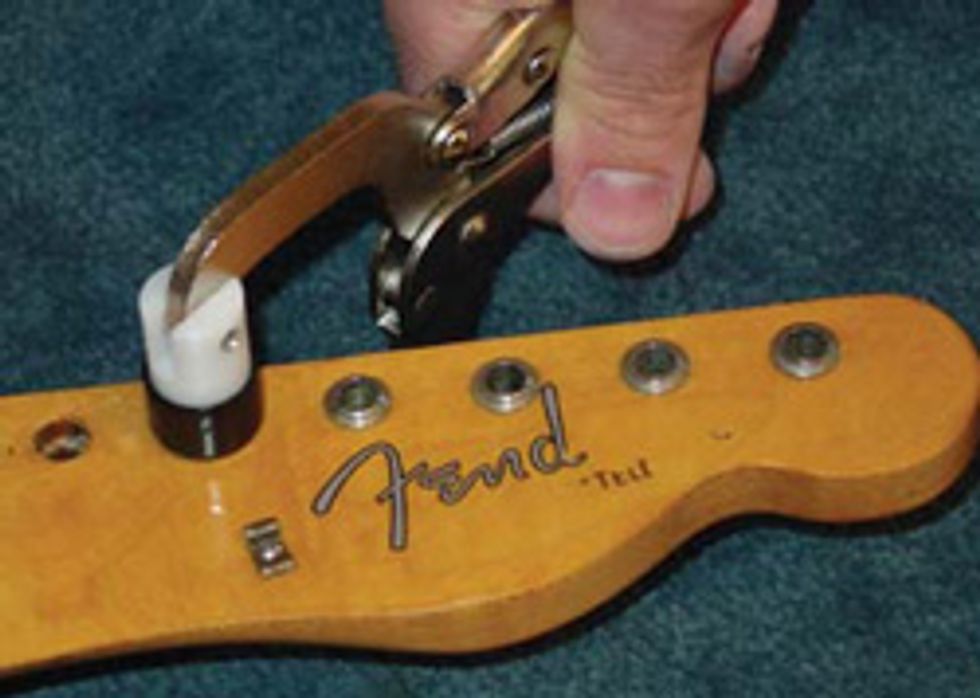
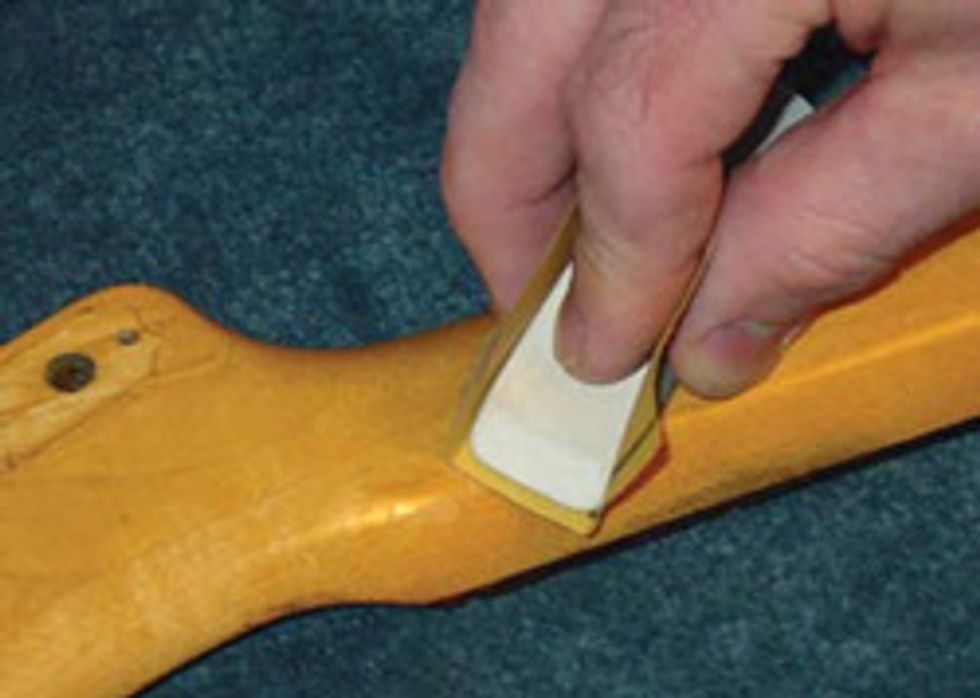
The decal was replaced after taking pictures of the neck, emailing them to Fender, and requesting a replacement decal. Fender is really helpful with this—unless of course it was fraudulently produced. The results were very rewarding: black lighting again revealed no trace of what was there, other than an original, well-played 1959 Telecaster neck.
John Brown
John Brown, of Brown's Guitar Factory, is the inventor of the Fretted/Less bass. He owns and operates a full guitar manufacturing and repair/restoration facility, which is staffed by a team of talented luthiers. He is also the designer of guitar making/repair tools and accessories that are used today by instrument builders throughout the world.
brownsguitarfactory.com
info@brownsguitarfactory.com


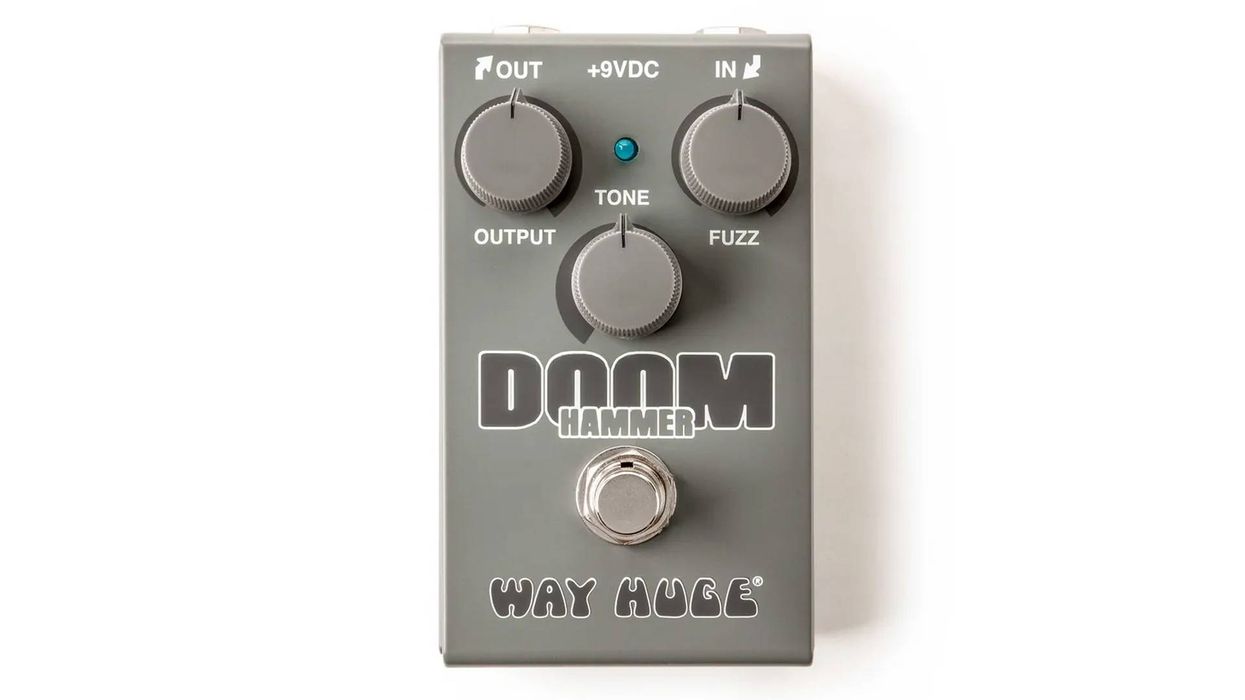

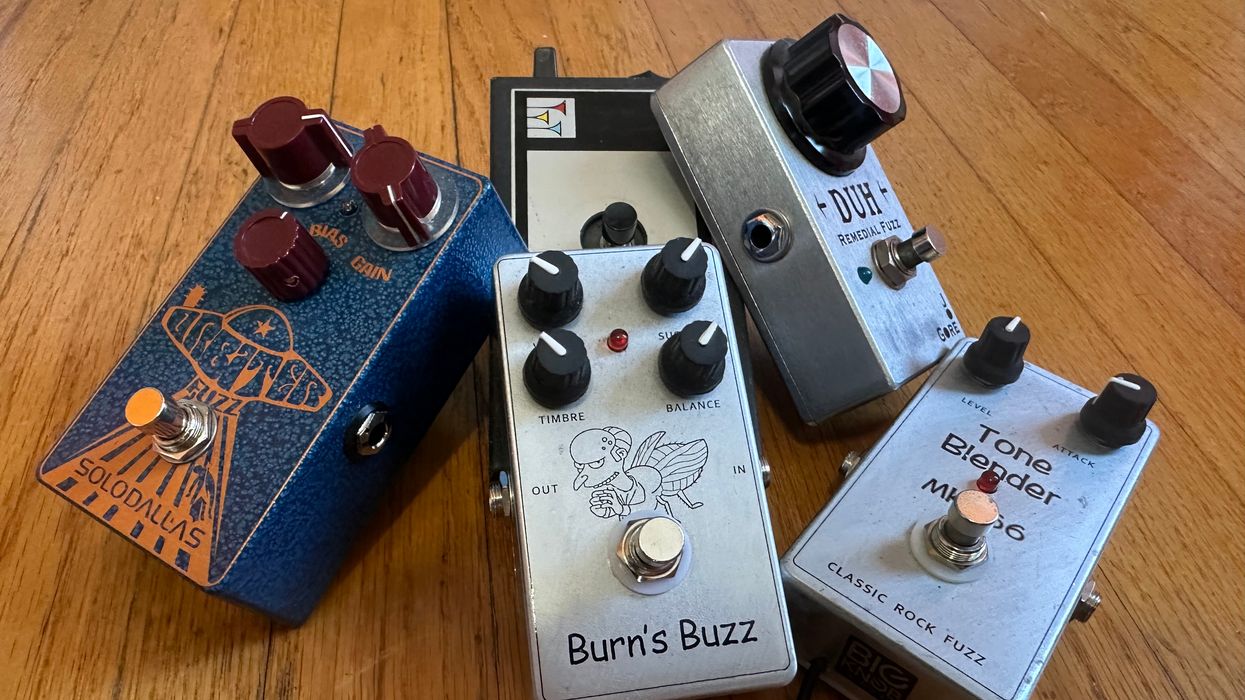

![Rig Rundown: Russian Circles’ Mike Sullivan [2025]](https://www.premierguitar.com/media-library/youtube.jpg?id=62303631&width=1245&height=700&quality=70&coordinates=0%2C0%2C0%2C0)
